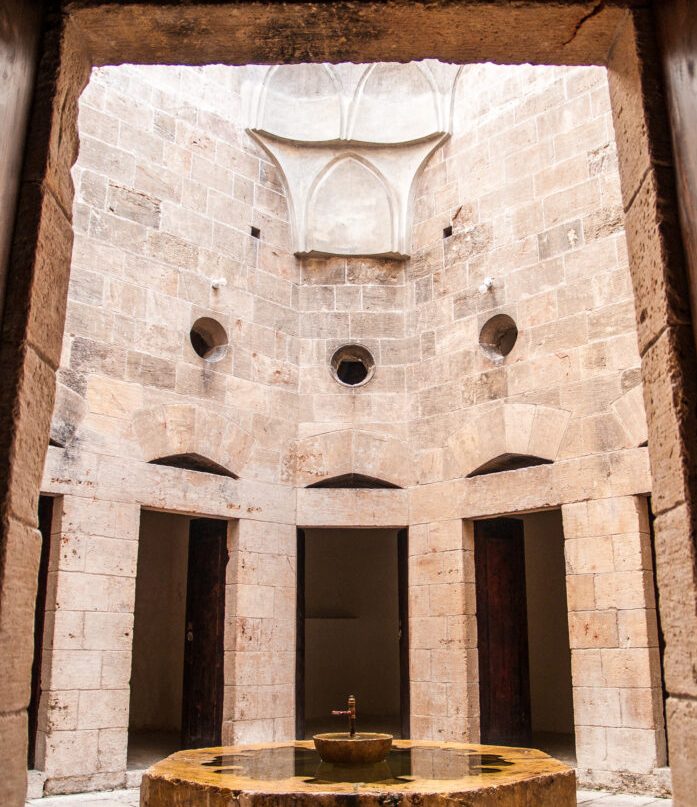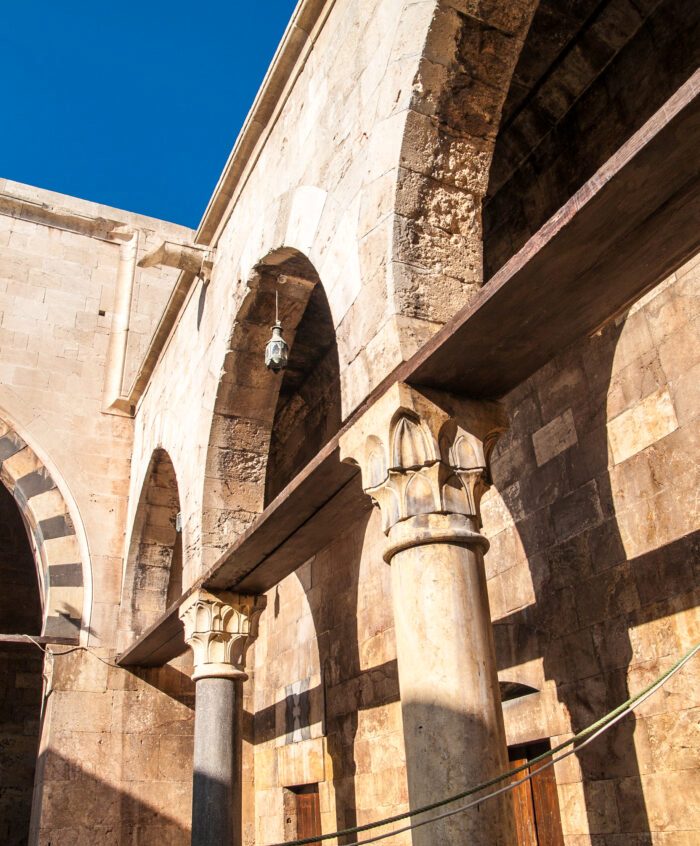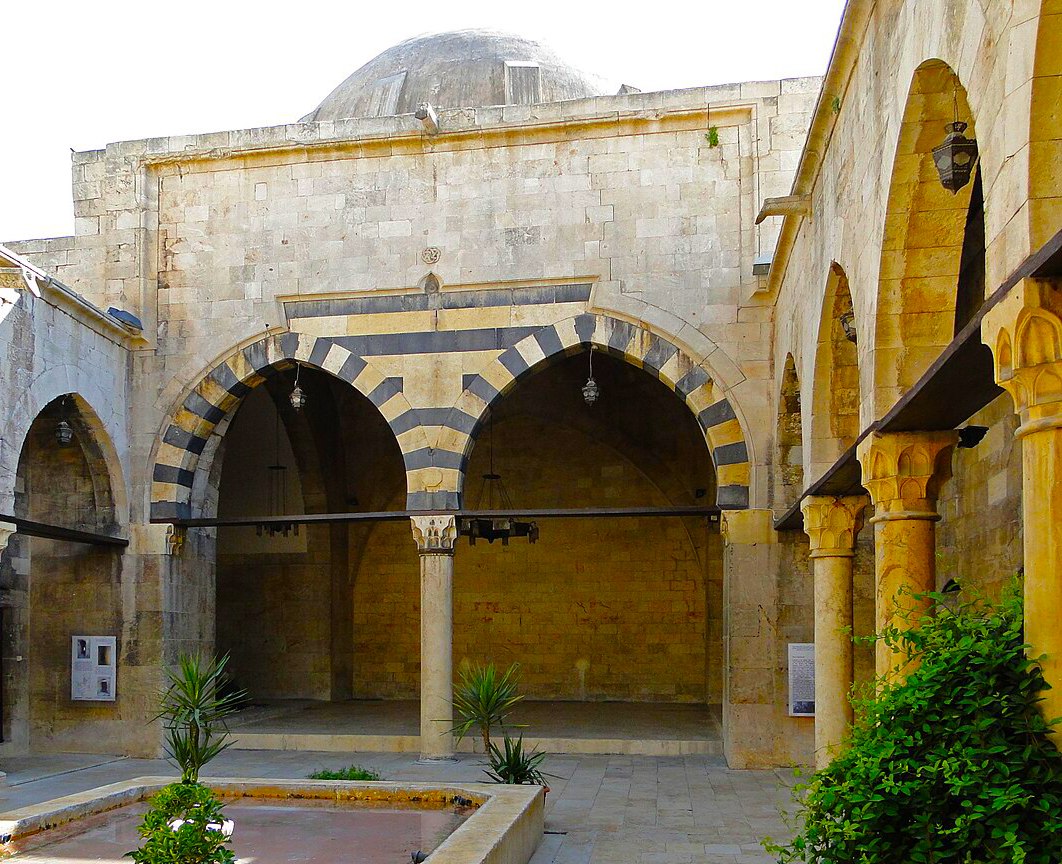Al-Bimaristan al-Arghuni in Aleppo (Maristan of Arghun al-Kamili) : A Forgotten Jewel of Medieval Medicine: Tucked within the ancient walls of Aleppo’s historic quarters lies a remarkable yet often overlooked monument of medical history: Al-Bimaristan al-Arghuni. This medieval hospital was not only a place of healing but also a symbol of Aleppo’s intellectual and humanitarian spirit during the Islamic Golden Age. While much of the old city has been affected by conflict in recent years, the legacy of al-Bimaristan al-Arghuni continues to inspire scholars, architects, and visitors seeking the roots of early healthcare and science.
This article offers a detailed guide to everything you need to know about al-Bimaristan al-Arghuni—its history, architecture, cultural significance, and what you can expect if you’re planning to visit Aleppo.
Quick Info : Al-Bimaristan al-Arghuni
| Feature | Info |
|---|---|
| Location | Aleppo, Syria |
| Type | Medieval Islamic hospital (Bimaristan) |
| Founded | 1354 CE by Governor Arghun al-Kamili |
| Historical Role | Provided medical & psychiatric care — unique for its era |
| Architecture | Mamluk style, stone courtyards, domed halls, intricate inscriptions |
| Special Feature | One of the earliest hospitals to treat mental illness humanely |
| Condition | Partially preserved, some sections damaged by conflict |
| Current Use | Historical landmark & cultural heritage site |
| Best Time to Visit | Spring and autumn, when Aleppo’s Old City is most pleasant |
What Is Al-Bimaristan al-Arghuni?
Al-Bimaristan al-Arghuni (Arabic: البيمارستان الأرغوني) was a hospital and medical school founded in the early 14th century in Aleppo. Like its counterpart in Damascus (al-Bimaristan al-Nuri), it was part of a sophisticated network of Islamic medical institutions that offered free healthcare, mental health treatment, and medical education during a time when most of the world had yet to develop formal hospitals.
The bimaristan—derived from Persian bimar (sick) and stan (place)—was far more advanced than the hospices of medieval Europe. It operated on the principles of science, hygiene, and compassion, serving all people regardless of religion or social status.
Historical Background
Who Built It?
The hospital was commissioned by Prince Arghun al-Kamili, an Ayyubid governor of Aleppo, around 1318 AD. Arghun was a high-ranking military officer under the Mamluk Sultanate and is remembered for his generosity and cultural contributions. He built the bimaristan not only to serve the sick but also to earn spiritual merit and public admiration.
Aleppo as a Medical Center
During the medieval period, Aleppo was a thriving hub of trade, scholarship, and architecture. The city attracted physicians, scholars, and scientists from across the Muslim world. Al-Bimaristan al-Arghuni was both a hospital and a teaching center, where students learned anatomy, pharmacology, surgery, and mental health care.
It is believed that this bimaristan was built to complement earlier institutions, such as the now-lost bimaristan built by Nur al-Din in Aleppo (similar to the one in Damascus), and it helped sustain the city’s reputation as a center of healing and learning.
Architectural Features
Exterior Design
Al-Bimaristan al-Arghuni is an excellent example of Mamluk architecture, known for its emphasis on symmetry, elegant stonework, and geometric decoration.
- The façade is constructed from beautifully chiseled Aleppine limestone.
- The entrance portal features a traditional pointed arch and ornate muqarnas—stalactite-like niches often found in Islamic architecture.
- A stone inscription above the door credits Arghun al-Kamili as the founder and includes Qur’anic verses referencing healing and compassion.
Interior Layout
Like most bimaristans, the Arghuni hospital follows a courtyard-based plan:
- Central courtyard: Serves as the heart of the building, allowing natural light and ventilation. Patients would often gather here, surrounded by calmness and water fountains.
- Patient rooms: Small but functional chambers open onto the courtyard, designed to separate various conditions and ensure hygiene.
- Iwan halls: These vaulted, open-ended rooms were used for lectures, consultations, and patient examinations.
- Pharmacy and kitchen: Specific areas were designated for preparing herbal medicines and meals tailored to patients’ needs.
Attention to Mental Health
Like many Islamic hospitals of the time, al-Bimaristan al-Arghuni provided psychiatric care, a revolutionary concept in medieval medicine. Patients suffering from mental illness were treated with a combination of talk therapy, music therapy, herbal remedies, and rest—a humane approach centuries ahead of its time.







Current Condition and Restoration Efforts
Effects of the Conflict
Sadly, the Syrian conflict that began in 2011 affected much of Aleppo’s historic Old City, including al-Bimaristan al-Arghuni. Parts of the building sustained structural damage, especially its stone roof and decorative elements.
Restoration Projects
There are ongoing local and international efforts to restore the bimaristan and safeguard it as a cultural and historical site. Restoration focuses on structural reinforcement, stone cleaning, and preserving Arabic inscriptions. While it may not be fully operational as a museum yet, it remains a protected heritage site.
Visiting Al-Bimaristan al-Arghuni
Location
The bimaristan is located in Bab al-Nasr, one of the historic neighborhoods within the Old City of Aleppo. This area is also close to several other key landmarks, such as:
- The Citadel of Aleppo
- Al-Nuri Mosque
- Al-Madina Souq
Opening Status
As of recent reports, the building is not always open to the public, and entry may require permission or a guided tour. Visitors should coordinate with local tour guides, cultural preservation organizations, or Aleppo’s Directorate of Antiquities for access.
Tips for Visitors
- Best Time to Visit: Spring and autumn are the most comfortable seasons for walking through the Old City.
- Dress Modestly: Respect local customs by wearing modest clothing, especially when visiting historic or religious sites.
- Photography: Allowed in most areas, but always ask your guide or host before taking photos, especially during restoration.
Why Al-Bimaristan al-Arghuni Matters Today
A Beacon of Medieval Medical Science
In an era when many parts of the world still relied on superstition and trial-and-error medicine, institutions like al-Bimaristan al-Arghuni embodied scientific principles, hygiene, and structured care. They laid the foundation for modern medical ethics and hospital design.
A Symbol of Cultural and Religious Tolerance
The hospital served Muslims, Christians, and Jews alike, showing that Islamic medicine was inclusive and humanitarian. This cross-cultural spirit is worth remembering and reviving today.
Inspiration for Modern Healthcare
The humane treatment of mental illness, the integration of education with practice, and the architectural logic of the building offer lessons even for contemporary healthcare professionals and architects.
Final Thoughts
Al-Bimaristan al-Arghuni is a jewel of Aleppo’s rich heritage—less known than the city’s citadel or souqs, yet deeply meaningful in its own right. For those interested in history, medicine, or Islamic architecture, this medieval hospital offers a profound glimpse into a time when healing was both a science and an art.
Though damaged, its walls still whisper the stories of compassion, innovation, and resilience. And for travelers seeking the soul of Aleppo, few places capture it quite like this bimaristan.
Finally.. If you have any questions, please contact us. To explore further, visit our Facebook Syria collection for rare images and cultural highlights.
Sources & References:
UNESCO – World Heritage Centre: https://whc.unesco.org
Archnet – Architecture & Heritage Database: https://www.archnet.org
World History Encyclopedia: https://www.worldhistory.org
Syrian Heritage Archive Project: https://syrian-heritage.org
Global Encyclopedia: Wikipedia



